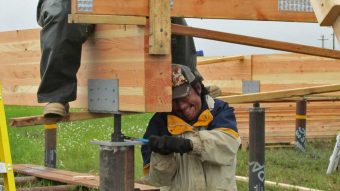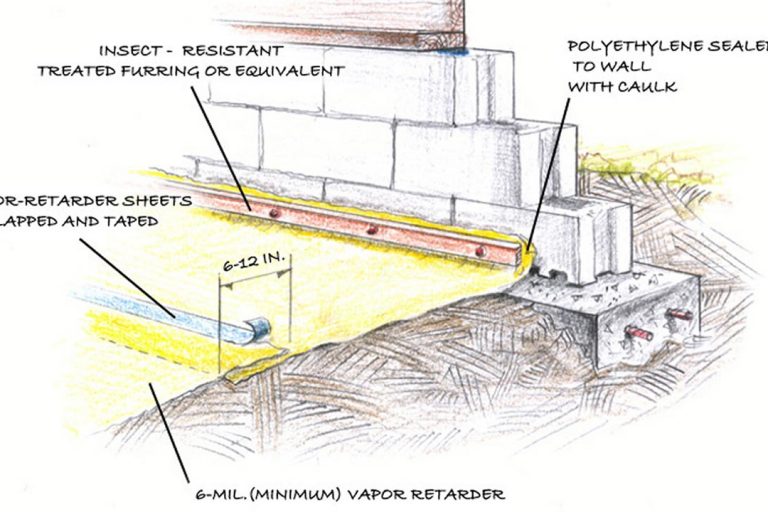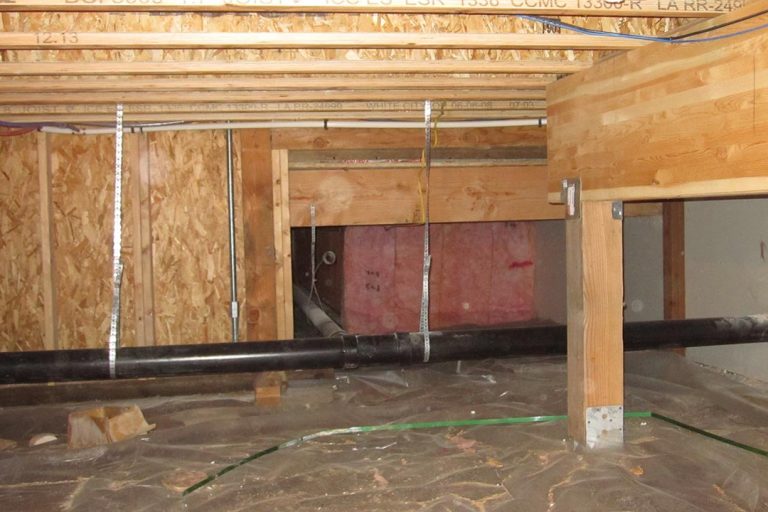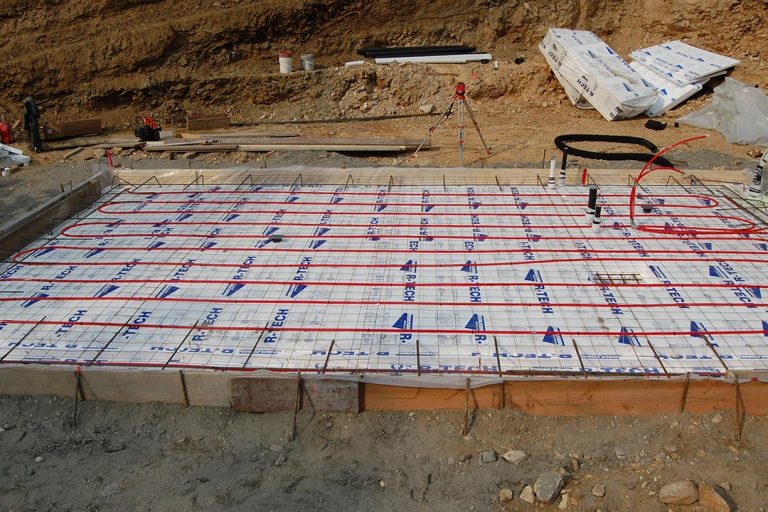Permafrost Foundations
The #1 piece of advice for building on permafrost: Don’t do it! That’s because homes are designed with the assumption that the foundation is both permanent and stable, and permafrost is neither. When permafrost thaws and settles, it causes foundations to move, which can create small problems like cracks in the drywall or major structural problems like sinking buildings, both of which can be seen in places like Interior Alaska where permafrost is widespread.
In cases where you cannot avoid permafrost, there are certain steps you can take to give yourself the best chance of success. First, it’s absolutely imperative to test the soil in your region. This starts with looking for localized signs such as:
- Are there any existing heated structures nearby?
- Are these foundations in good shape?
- Is the terrain sloped, open, and south-facing?
- Is the terrain flat? Are there marshes or standing water nearby?
- Do you see signs of thermokarsts or ice wedges?
- Is property an early-succession boreal forest?
- Is a drunken forest present?
If you decide to build on a site, it’s important to test the subsurface conditions to look at the occurrence, extent, and characteristics of permafrost, ground ice, soil, and rock. Borehole drilling is the most common and cost-effective method for evaluating permafrost.
CCHRC has designed many homes in areas with highly unstable permafrost, which has forced us to come up with innovative solutions for building on ground that is likely to shift and thaw. This includes everything from conventional permafrost foundations to highly experimental designs.
Conventional Foundations
Driven pilings- A common method for building on permafrost is to drive pilings deep into the frozen ground and elevate the home several feet off the ground. In the village of Atmautluak, for example, the ground has a highly active layer of soil that freezes in the winter and melts in the summer.
CCHRC helped design and build 2 homes in 2013 that have steel pilings driven 35 feet into the ground with an adjustable bracket welded to the top so the house can be moved if the ground shifts.
Adjustable post on pad- One of the most cost-effective options building on unstable soil is an adjustable post-on-pad system on top of a thick gravel pad. While this allows the house to respond to changes in the ground, it does not have as much adjustability built into it as piles.
Innovative Foundations
Triodetic foundations consist of a very rigid steel or aluminum frame which sits on top of the soil and keeps the building level in the event of shifting or settling. Because of its multipoint framework, it can adjust in many directions to counter the movement of ground.

Adjustable Cribbing Foundation
This raised foundation is a rigid wood frame diaphragm designed to thermally isolate the building from the soil, span inevitable movement, and be leveled over time. These foundations are placed on well-compacted gravel pads. They are close to the ground, minimizing the effect of cold winds. The floor beams rest on adjustable saddle brackets, on top of a series of treated wood pads.
Demonstrations
Experimental Foundations
Insulated raft foundation- This innovative foundation was designed for permafrost soils as a more energy efficient alternative to a conventional raised foundation. It is built on top of a gravel pad and consists of steel floor joists elevated from the ground with EPS foam board, and polyurethane foam sprayed through the joists against a geo-textile mat.
The idea is to thermally isolate the building from the ground so heat from inside the home does not disrupt the soils. The long-term performance of these foundations is still being studied at projects such as the University of Alaska Fairbanks Sustainable Village.
Demonstrations
Related Resources
| Title | Resource Link |
|---|---|
| Building a Raised Floor | |
| Design Manual for New Foundations on Permafrost | |
| Design Manual for Stabilizing Foundations on Permafrost | |
| Guide for Permafrost Foundations | |
| Permafrost Foundation Case Study: Triodetic Foundation Retrofit | |
| Permafrost Foundation Case Study: Ventilated Crawlspace Retrofit | |
| Permafrost Technology Case Study: Adjustable Jack Foundation | |
| Permafrost Technology Case Study: Crib Foundation Retrofit | |
| Permafrost Technology Case Study: Ground Source Heat Pump Retrofit | |
| Permafrost Technology Case Study: Grout Injection | |
| Permafrost Technology Case Study: Monitoring | |
| Permafrost Technology Case Study: Poor Compaction | |
| Permafrost Technology Case Study: Thaw Stable Foundation |










